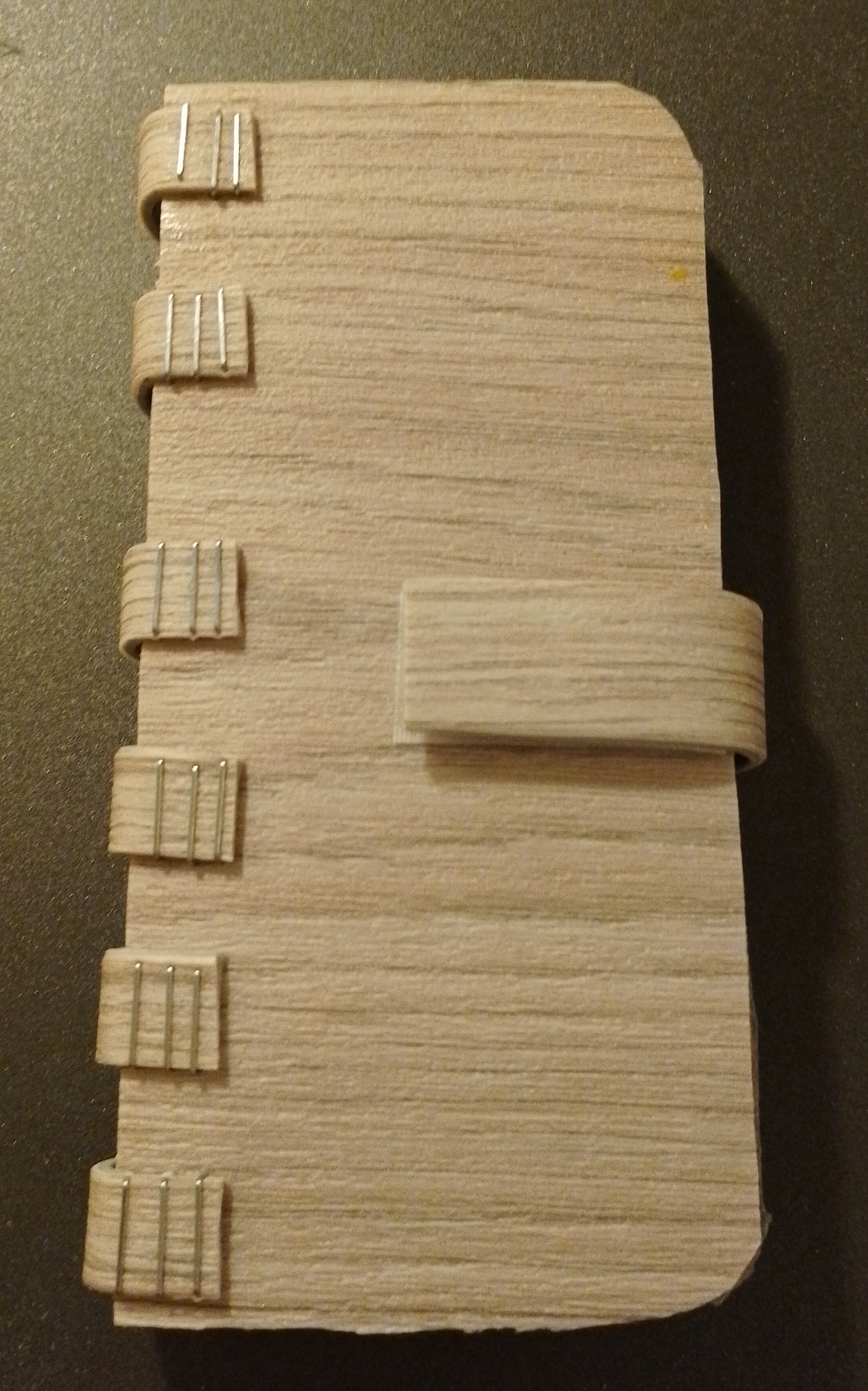Dear friends,
Last month, I posted this big project idea of mine to Beehaw's as well as Hexbear's DIY communities. Now I'd like to give you an update.
All figures I'm referring to are here: https://imgur.com/a/b8vGfQf
First, a big thank you to all who have replied, you've helped me a lot in making this project a reality. I have distilled your answers, tips and critiques into a text document, and I can happily tell you that they gave me a more realistic understanding of what I want to accomplish.
I formatted the post like this because it's quite long, and I like to yap, as the kids say.
General thoughts:
So, my original post showed the project as I envisioned it for a while now. Many of you have made me realise that there are a myriad of factors to consider, just for hanging the shelves on the wall ... not to mention the difficulty of sawing, building, painting everything yourself, as well as the price! Good lumber ain't cheap, kids! I didn't mention it in the original post, but for a while, I was also thinking of a solution as described here, but I really need something sturdy, and I didn't really care for the aesthetic look of it, so I dismissed the idea.
Friends, I'm happy to say that I think I found a middle ground. There are still some questions to be answered and difficulties to overcome, but I haven't been this excited (manic) about this project since a while now. Here's the plan:
My current plan, basically:
- See fig. 1.
- I ended up deciding to build the whole thing out of IKEA Kallax shelves and cut-to-size painted wood.
- Two IKEA 4x1 Kallax shelves (002.758.48) replace the vertical support beams, which I called "L-shaped studs" in my original post.
- In between those two Kallax shelves (198cm), there is a wooden board, that has been cut to the appropriate size and painted white. This board also acts as a shelf and sits on top of the two Kallax-es.
- Below this, we find the TV sideboard (also Kallax, 705.620.87).
- Between the TV sideboard and the tall Kallax shelves there is about 25 cm of space, perfect for two loudspeakers.
- On the extremities of the wall, there are two desks, built from a smaller 2x1 Kallax shelf (903.015.55) and a wooden board.
- Above each desk there is even more shelf space, which is mounted in between the top of the "Kallax towers" and the wall on either side: another wooden board, cut to the appropriate size, white.
- As we go further and further upwards, my ideas are less and less concrete. I can imagine different configurations going upwards.
- On top of both 4x1 Kallax towers, there could be yet another pair of 2x1 Kallax-es, to really get the most of the room height.
My current plan, the construction in detail:
- The main hurdle is the almost 2m long space between the two "towers". I'd like to have my record collection on there, so the load will be heavy to very heavy. Obviously, this means I need to get a strong wood: I was thinking oak, larch or beech (?)
- But buying strong, expensive wood only helps me so much. I can't just mount an oak board to the wall and the Kallax towers with a couple of brackets and screws, and hope for the best...
- [fig. 2.] This is why I want to make two half lap joints at each end, and lock them together with the desk shelves.
- So my idea is to make one 5m long board out of three smaller ones:
151x39 cm: (length of desk + length of Kallax tower) x (width of Kallax)
A second 151x39 for the other side
280x39 cm: (length of Kallax-es on either side + distance between them)
- I have access to basic machinery to make the lap joints, I also want to invest in some hand tools to make this. I've always wanted to do this, and it seems doable (???), if I make two or three practice joints before ruining a €200 piece of oak
- The 5m long board will then be secured to the Kallax towers with screws, and supported on the back wall with an angle profile, as well as mounted on the side walls with brackets.
- Obviously, to support most of the weight, the Kallax towers will need to be bombproof, mounted to the thick, brick walls with strong dowels.
- [fig. 3] I have a baseboard (ca. 6,2 cm high and 1,7 cm wide) that I need to build around. I want the Kallax towers to be flush with the wall, so I'll screw some feet to the bottom of the towers.
- In the section above, I wrote that I would maybe want to set another 2x1 Kallax on top of the 4x1, constructing an epic 6x1 tower of biblical proportions. This would have the added benefit of securing this 5m long board even more (I think...?)
- Then, I'd have just under a meter left to go to the ceiling. Here, at the top, one could store things needed very rarely, or have plants... See the next section for ideas like that.
- [fig. 4] Short point on the desks: the whole of the Kallax series is 39cm deep. That's a bit narrow for a desk. That's why I'll cut wood to the size of 110x60 cm. The small, 2x1 Kallax acts as one of the legs, while the other corners are supported by wall brackets. This means, that the desks protrude further into the room at 60cm, while the rest of the construction is narrower by 21cm. This also means, that there will be a small space inbetween the 2x1 Kallax (desk), the back wall, and the 4x1 Kallax (tower). That space (ca. 0,7m²) can be used for various storage needs.
My current plan, design and decor:
- I made a couple of sketches of how things could look like, and I'd also love to hear your ideas.
- [fig. 5 & 9] Let's start with the centrepiece: I was toying with the idea of getting a projector/screen instead of a TV. The screen could be mounted in between the Kallax towers, and the projector on the other side of the room above the couch. This could leave the central area much more open. Then you could have – for example – an old, broken CRT TV as decoration; or a statue, some type of artwork on the wall; three potted plants, etc ..... For now, I've decided to scrap this idea, and I felt like I could come back to it at a later point if I feel like it. The TV will obviously be mounted on a swivel. The back wall should be decorated/painted/wallpapered in some way, I just don't want to have it white. I've always wanted an LP stand, to get a "Playing right now: ..."-effect. I feel like this space is almost like a small window, it could be made into a cute niche with the right decor and the right lighting. Speaking of, I'm very open towards the lighting situation, since I don't know anything about that and have no clear vision of what I want it to look like; maybe also IKEA (Dirigera, 105.034.06)? Furthermore, I'm pretty set on having LPs as well as A/V equipment in the TV sideboard.
- [fig. 6 & 7] Next, the desks: my partner and I are both use laptops. The external screens will be mounted on swivels, and the desks will get retractable trays for keyboard and mouse. Kallax inserts from IKEA (doors, drawers...) can be chosen as needed. Above the desks, as described in the previous section, there is a shelf. Here one could store folders with all sorts of important papers. Or a potted plant, whatever. Beneath this shelf, one could even install some sort of lightweight, hanging rack for stuff needed daily, or space for pens... The back wall of the desk is probably the most exciting part: Magnetic? "Letter rack" style? S-hook-system? Please share your experiences/thoughts/inspo!
- [fig. 8] At the very top, above the centrepiece: I'm leaning towards plants and artwork. If you have cool ideas, I'd love to hear them.
Open questions at the end of all this:
I'd like to hear your general thoughts and concerns!
Which wood for the long 5m shelf?
Lap joints as described above: yay or nay?
Lighting systems?
Back wall of desks?
THANK YOU <3





